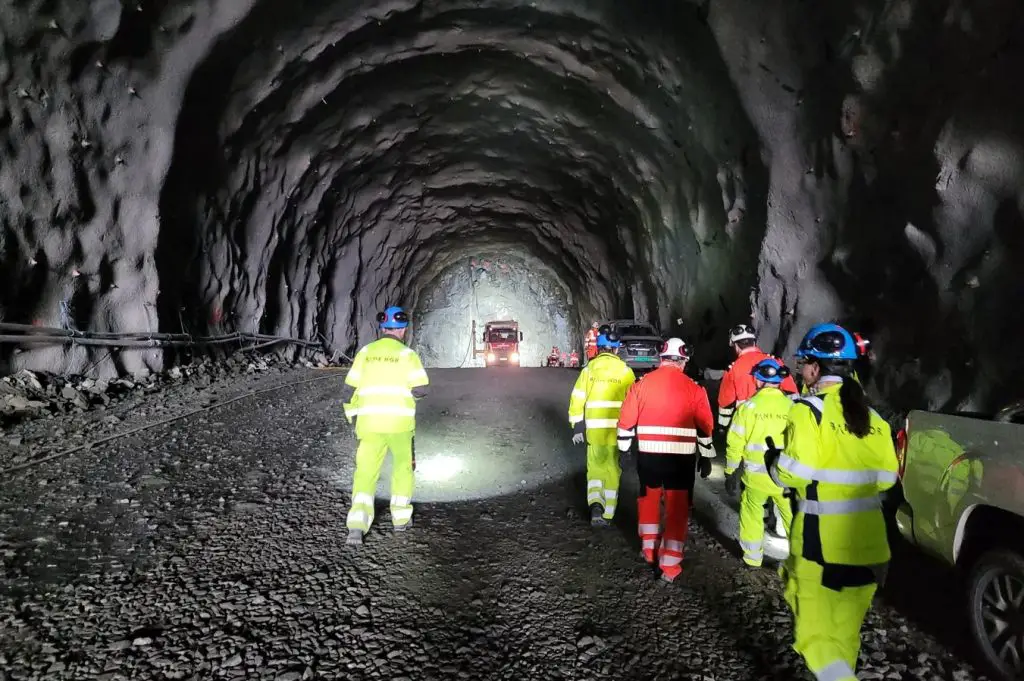Starting with Hestnes Tunnel, Norway’s Rail operator, Bane Nor, has partnered with research organisations Sintef and the Norwegian Geotechnical Institute (NGI), as well as contractor Veidekke, to revolutionise tunnel construction with an environmentally friendly approach.
This innovative technique involves utilising pre-injection instead of a concrete lining to protect the Hestnes Tunnel from frost and water damage. The groundbreaking method is poised to transform tunnel construction practices not only in the rail industry but also in other sectors. This is by reducing costs and carbon emissions.
A Sustainable Approach for the Hestnes Tunnel in Norway
The Hestnes Tunnel is a 3km segment of the new 15.8km rail line from Kleverud to Sørli in Stange municipality. It was initially planned to incorporate a cast in-situ concrete lining with a membrane for frost and water protection. However, Bane Nor’s quest for greener alternatives led to the adoption of the inject system. As a result, it creates a dry environment inside the tunnel. This leads in significant reductions in operational costs and carbon emissions.
Rønnaug-Ingeborg Resset, Bane Nor’s project manager, highlighted the advantages. He stated: “It creates a reduction of CO2 emissions during the construction of the tunnel of up to 80%. In addition, we hope to reduce the cost by around 50 per cent compared to full casting.”
The Process: Pre-Injection Technique
The innovative approach combines various techniques to ensure effective tunnel sealing. Initially, a series of holes are drilled into the rock to create an “umbrella.” Through these boreholes, a cement-based injection compound is pumped under high pressure, penetrating fractures in the rock and forming a rough seal. Subsequently, a colloidal silica material is applied. It starts as a fluid before transforming into a gel. This allows it to permeate even the smallest cracks and harden, creating a fine seal.
NGI’s technical specialist, Karl Gunter Holter, praised the efficacy of the method. He stated: “Use of the very low-viscosity injection material colloidal silica, in combination with a well-known micro cement, has been shown to give a very good sealing result.” Detailed monitoring and assessment of injection parameters, in comparison to the achieved sealing outcome and practical construction engineering, have played a crucial role in refining the application of these processes.
READ ALSO: Groundbreaking Ceremony Held for Nordhavn Tunnel in Copenhagen, Denmark
Extending the Innovation to Water Tunnels
The success of the pre-injection technique in the Hestnes Tunnel has generated interest beyond the rail industry. NGI is collaborating with Oslo water firm Oslo Vav to explore the applicability of this method to two upcoming water tunnels in the city. This cross-industry collaboration aims to facilitate knowledge sharing and expertise transfer. Thus, it paves the way for more sustainable and efficient tunnel construction practices.
Bendik Røssevold, Veidekke‘s project manager, highlighted the project’s objective. He stated: “The aim is to make the walls and slopes of the tunnel as [water] tight as possible but to allow a certain amount of water to penetrate through the sole, which has a drainage system that leads the water out of the tunnel. It is early in the process, but the effect so far seems promising.”
The collaboration among Bane Nor, Sintef, NGI, and Veidekke marks a significant advancement in sustainable tunnel construction. By embracing the pre-injection technique, the Hestnes Tunnel project has demonstrated the potential to reduce carbon emissions, lower costs, and enhance operational efficiency. The success of this groundbreaking approach has sparked interest in various industries. Thus, it will foster a broader movement toward greener and more effective tunnel construction practices.

Leave a Reply